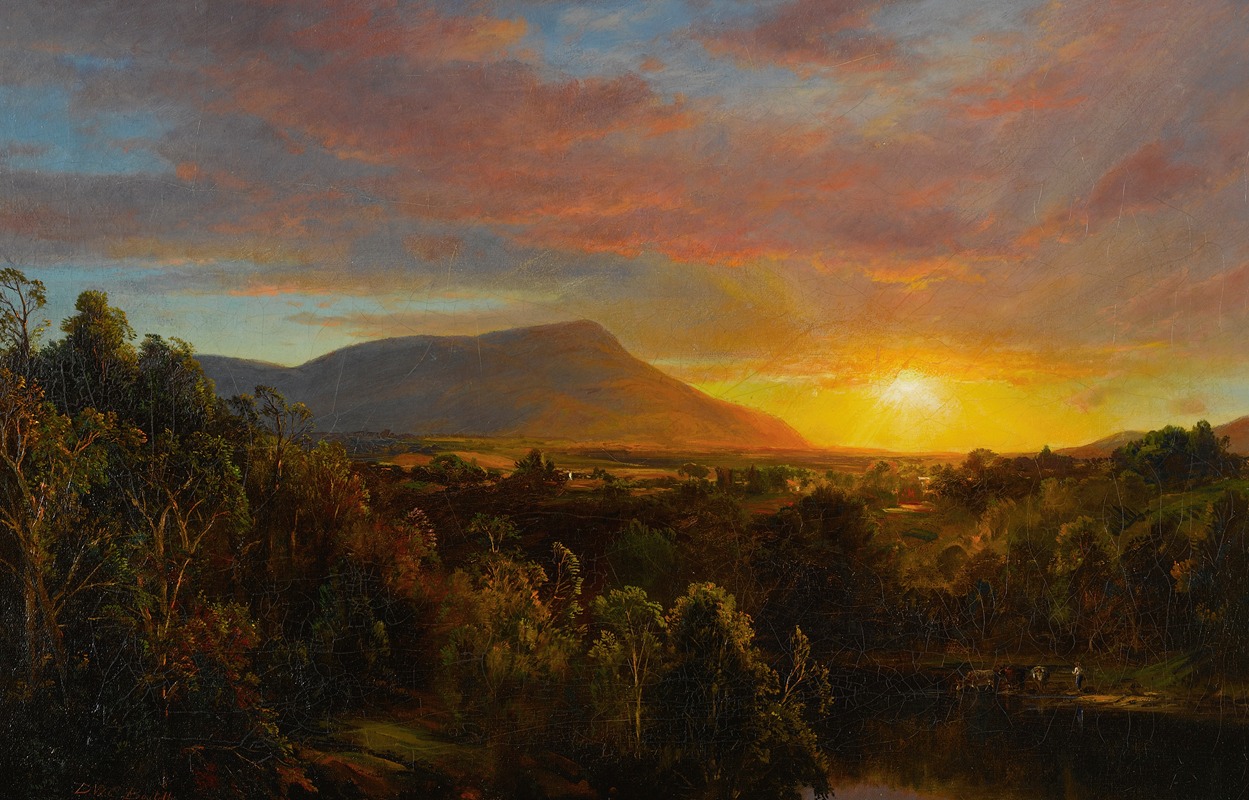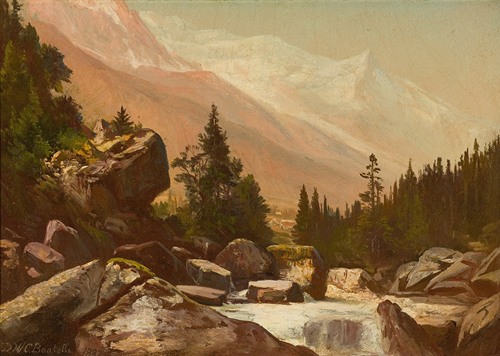
DeWitt Clinton Boutelle was born on April 6, 1820 in Troy, New York. He was a self-educated artist but began painting “under the influence of Thomas Cole and Asher B. Durand at an early age.” Both men who influenced him were well known Hudson River School members. Boutelle created a mix of portrait and landscape paintings during his career. Also, he did not remain long in one area. Instead, he moved around between New York, New Jersey, and Pennsylvania. The year that Boutelle started working is unknown but records show that he was painting in New York City by 1846.
In 1848 Boutelle moved to Basking Ridge, New Jersey. In 1851, he moved back to New York City and in that same year, he was elected an Associate Member of the National Academy of Design. However, New York City was not working out for Boutelle so in 1855 he moved once again, this time to Philadelphia. From the time Boutelle began painting to about 1857, “he painted almost entirely in the Hudson River Valley, Catskills, New Jersey, and along the Susquehanna.” He did paint some subjects outside of this region, like Niagara Falls, but for the most part, he seldom left it.
In 1858, Boutelle moved one final time to Bethlehem, Pennsylvania and settled there for good. He also became a member of the Pennsylvania Academy of the Fine Arts in 1862. Boutelle exhibited his work in numerous places at different times throughout his career. He exhibited work at the National Academy of Design during the years of 1846-74. Between 1854 and 1869, his work could be seen at the Pennsylvania Academy of Fine Arts. Boutelle’s work was also displayed in the Boston Athenaeum (1854-61), the Washington Art Association (1857-59), and the American Art-Union (1845-52). “His paintings can be found today in the Museum of Fine Arts, Boston, The Corcoran Gallery of Art, the High Museum of Art, and the Newark Museum, among other institutions.”
On November 5, 1884, DeWitt Clinton Boutelle died after a nomadic life and career. His son Edward C. Boutelle followed his father and became an artist himself.


